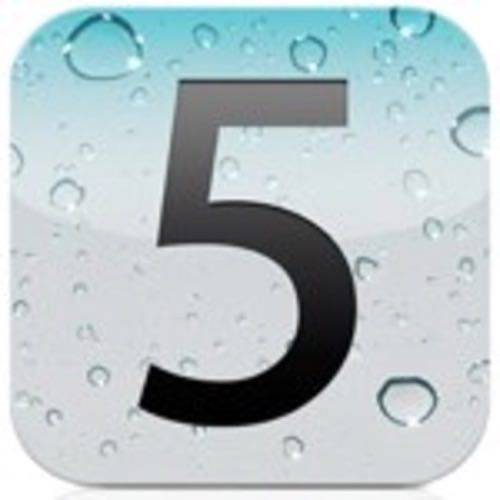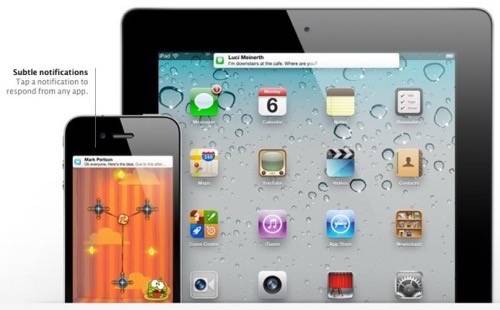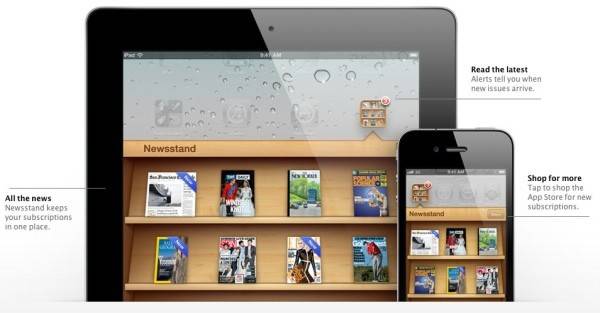Today’s keynote at WWDC, Apple’s developer conference included a number of major announcements, including an update to the Mac OS, its new cloud service and MobileMe replacement iCloud, and – the “one more thing” – its new music matching service for iTunes.

But as Apple opened the keynote touting its strong sales figures – and the checks that it has cut to Apple developers – it’s arguably the company’s mobile operating system that has quickly become one of Apple’s most valuable and important assets. iOS head Scott Forstall took the stage today in San Francisco to tout some impressive figures for the operating system: now installed on over 200 million devices worldwide.
So it was the unveiling today of iOS 5, the newest version of the operating system that’s worth examining in closer detail, and we’ve got the primer for you below with all the important details about today’s announcement and its implications for the mobile market and developer ecosystem.
What new features were introduced in iOS 5?
Apple says it has introduced over 200 new features to the operating system, which will be compatible with iPhone 3GS and iPhone 4, iPad and iPad 2, and the 3rd and 4th generation iPod Touch.
Some of the highlights from the new OS include:
Notification Center: Apple has revamped notifications on the iOS, ditching the pop-up notification button. Instead notifications – for emails, texts and so on – will appear at the top of the screen. When you pull down on this new menu, you’ll be able to see the new notifications and select the one you want to follow-up on. These new notifications will not interrupt applications that are running, but will appear briefly at the top of the screen instead. The notifications will also appear when the device is locked.

iMessage: This new all-inclusive messaging service allows iOS 5 users to send texts, photos, videos, location and contact information over 3G or WiFi – all without incurring any SMS fees.
Twitter integration: Twitter is deeply integrated with iOS 5, so that when you sign in once via Settings, you’ll be able to tweet directly from a number of apps, including Safari, Photos, Camera, YouTube, or Maps. The integration will also make it easier in turn for third-party developers to add this single sign-on capability.
Newsstand: A new app that will allow users to easily manage and access their magazine and newspaper subscriptions. New issues will be automatically downloaded in the background.

Reminders: A To-Do list, of sorts, that will work with iCal, Outlook and the new iCloud. The app will let you set due dates as well as associated locations for various tasks.
Camera: In iOS 5, the Camera app will be accessible right from the Lock screen and you’ll be able to use the volume-up button to snap photos, as well as the Home key — making it easier to snap pictures on the go. A number of new features have been added to improve the camera’s functionality as well, including pinch-to-zoom gestures and single-tap focus. And like many of the new features of the operating system, photos can be automatically synced via iCloud.

Photos: The Photo app also gets some updates, including the ability to crop, rotate, and remove red eye, all from within the app. You’ll also be able to organize photos into albums, and again, sync with your other iOS devices via iCloud.
Safari, Reader, and Reading List: The iOS mobile browser is getting quite a few key updates, including tabbled browsing and better performance. A new feature, Safari Reader will allow you to display articles stripped of ad content, and Reading List will let you save articles to read later.
No need for iTunes to Activate Your Device: The new operating system will no longer require users have a computer in order to activate their devices. Furthermore, you’ll be able to download iOS updates without having to attach that long white cable.
WiFi Syncing: As with future update to the operating itself, iOS5 will enable you to sync your devices to your Mac or PC via WiFi. When you charge your device, it will automatically sync and back it up.
New Multitasking Gestures for iPad: iOS 5 includes several new gestures for iPad users. Using 4 or 5 fingers, you’ll be able to swipe up to reveal the multitasking bar, pinch to return to the Home screen, and swipe left or right to switch between apps.
Keep reading to find out why these changes were made and how they might impact the mobile ecosystem
Were these features necessary?
Many of the features that were announced today seem to tackle some of the things that have caused even the staunched Apple fan to complain. Just last week, for example, ReadWriteWeb editor Richard MacManus took a look at the problem of “sync” and asked why it isn’t solved. Apple plans to address sync in two ways: utilizing WiFi capabilities (rather than the annoying tangle of white USB cords) and by investing heavily into its new iCloud, encouraging users to store their photos, music and documents in the cloud so it can be readily accessible across devices.
And ReadWriteWeb’s Mike Melanson had a lament about iOS notifications earlier this spring — certainly one of the most annoying aspects of iPhone and iPad ownership. While the new notification system isn’t entirely what he asked for in that story, Apple has hopefully put an end to one of the most frustrating things about notifications up til now: the fact that they bring to a crashing halt what you’re actually doing, interrupting movies and games and reading.
Do these updates make Apple more competitive against Android?
It’s interesting to note that in the case of notifications in particular, that Apple has borrowed heavily from the Android operating system, something that many people were quick to point out during today’s announcements. It’s not just Android features that are showing up in iOS 5, however. No doubt the newly announced iMessage looks an awfully lot like the very popular Blackberry Messenger app.
But will these new features help put Apple ahead of the competition in the mobile space? The company touted figures on stage today to stake its claim as the number one mobile operating system, despite recent figures to the contrary.
What are the implications for third party developers?
Some of the most lively post-WWDC-keynote discussions today involve how Apple’s announcements may or may not impact the third party developer ecosystem. Despite touting the $2.5 billion it has paid out to software developers over the course of the operating system’s history, it seemed today that Apple was taking many of the features and ideas from some of the most popular apps and incorporating it directly into its own offerings.

AllThingsD’s Liz Gannes asks, “What did Apple just kill?” She notes that apps like DropBox may be less useful for iOS users as Apple unveils its own easy syncing and storage capabilities. Similarly photo sharing and storage apps like Flickr and camera apps like Camera + may become unnecessary.
There’s nothing like a good expletive, of course, to get people riled up, and the one uttered by Instapaper developer Marco Arment perhaps best summarized the feelings of many when watching the announcements on stage today. “Shit.” Indeed, the new Reading List feature in iOS 5 is awfully similar to Instapaper, letting users flag posts to read later.
But Arment has since expounded his thoughts on what the new feature will mean for Instapaper, and like many developers who’ve since commented — including folks from Boxcar (who does notifications) and GroupMe (who does group messaging) — Arment seems positive that, in the end, Apple’s new features won’t spell the death of third party developers. Instead, Apple sanctioning these offerings by making them a core part of the operating system may actually open more customers’ eyes to their availability.
And there are, of course, always other mobile operating system for which people can develop, right?
When will we get it?
Although the seed is available for developers now, customers won’t see the new operating system until the Fall. There’s no specific date at this time.
One more thing. So, iOS 5. Does it come with an updated iPhone?
There were no hardware announcements on stage today at WWDC. No new iPhones, no new iPads, no new iPod Touches. But rest assured, the Apple rumor mill rarely sleeps. I’m sure there will be plenty of leaked photos to keep us all busy speculating until the next Apple keynote.










